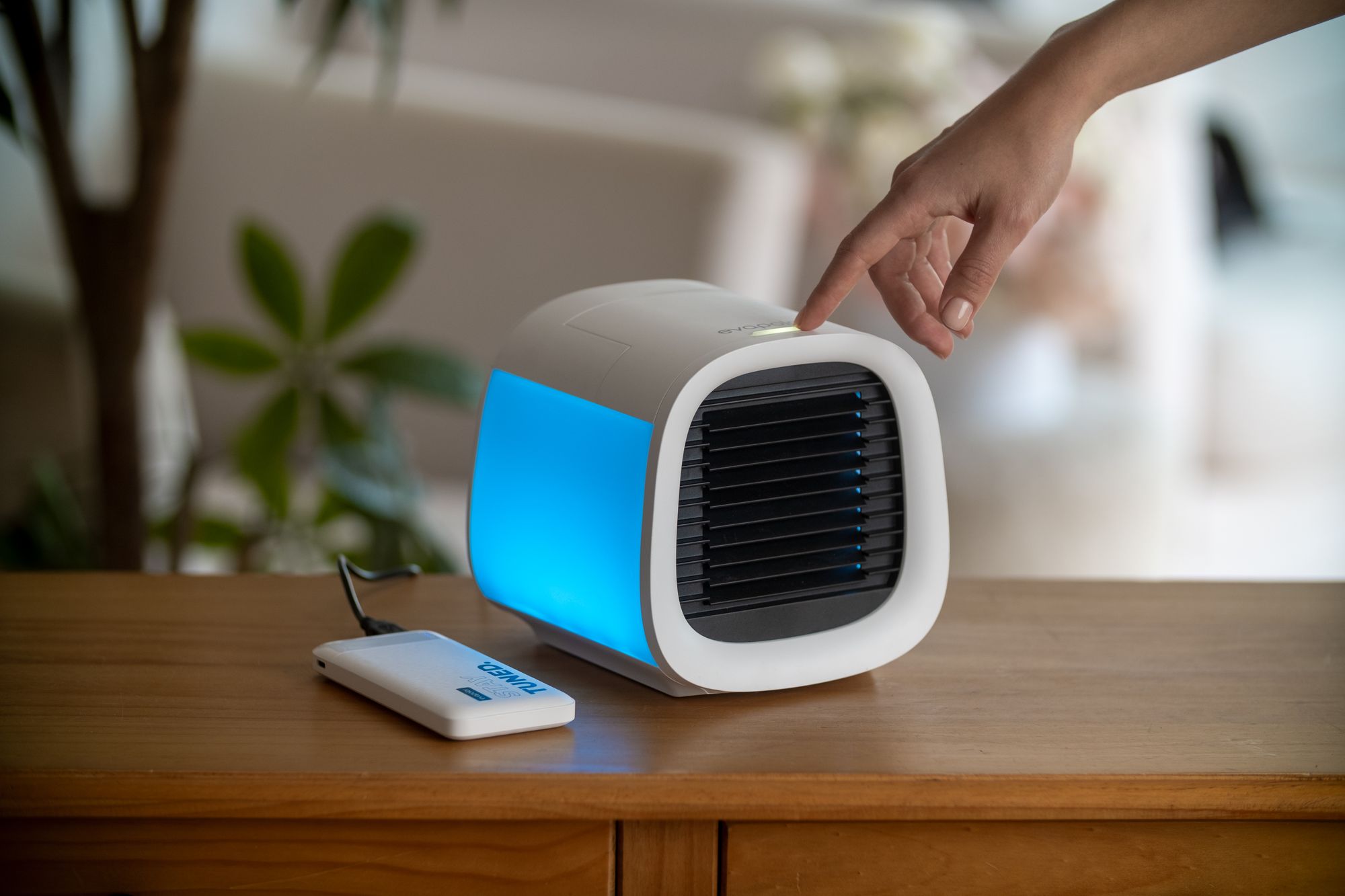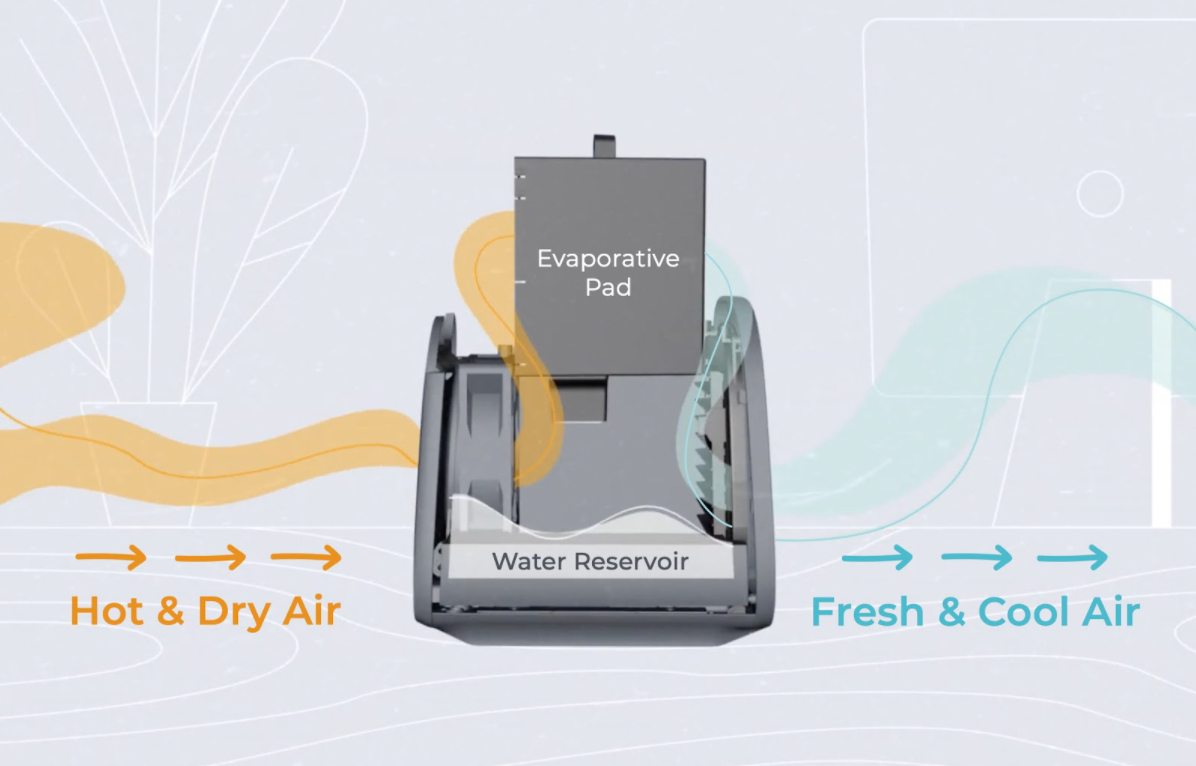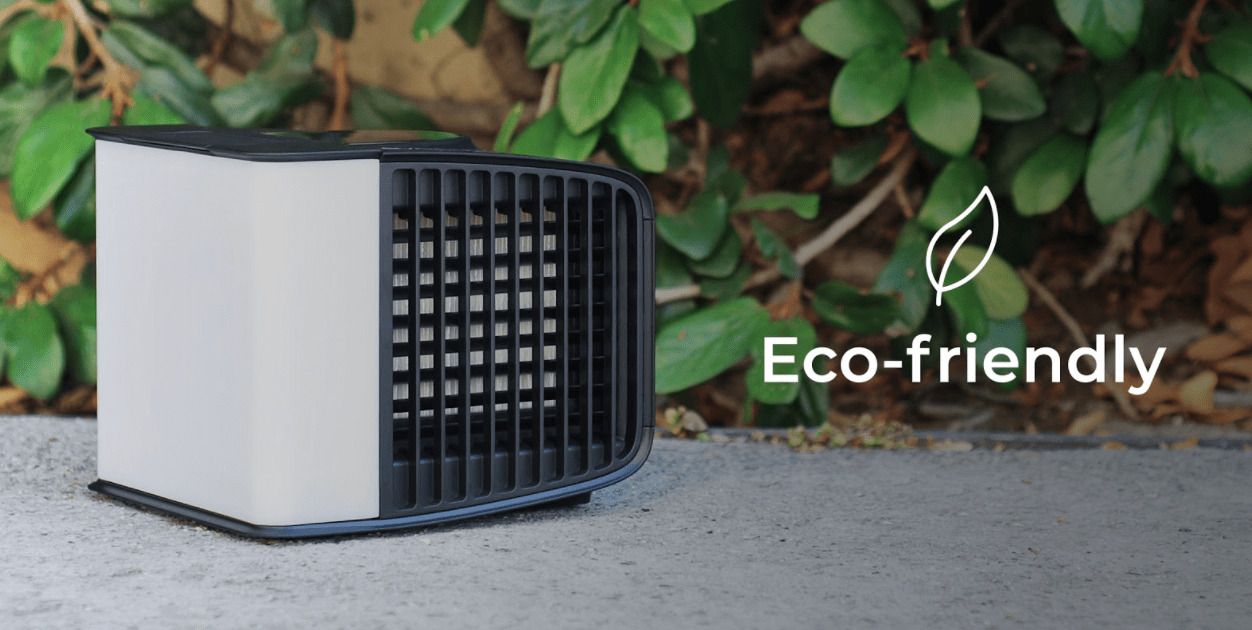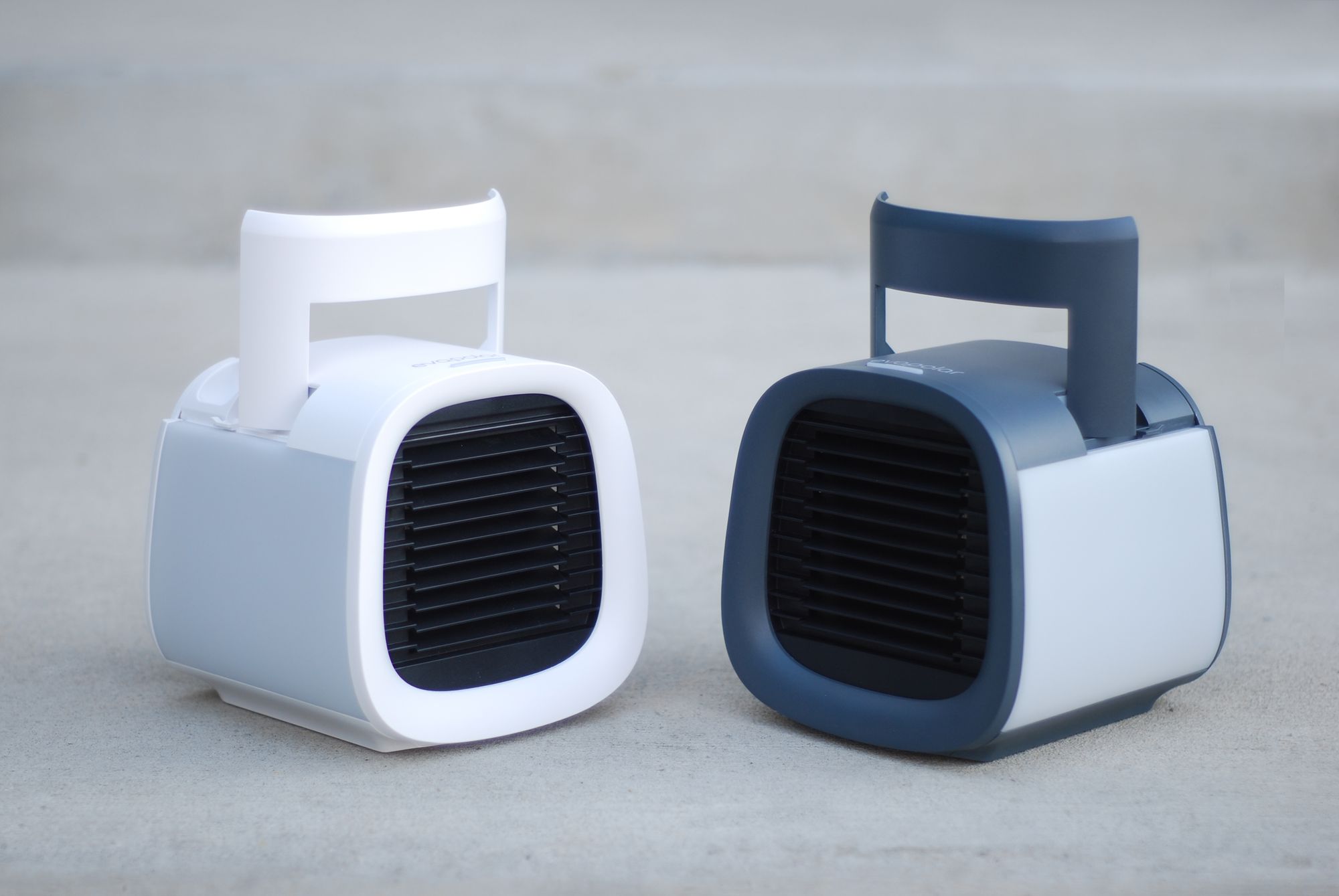Have you ever thought about what kind of system are you: open or closed? Somehow it turns out, this is not a philosophical question only, but a physics one too.

evaCHILL
The most effective cooling device
You, the same way as all living things, are an open system, meaning that you exchange both matter and energy with your environment. For example, you take chemical energy in the form of food, and work on your surroundings in the form of moving, talking, walking, and breathing.
All the exchanges of energy that take place inside you (such as your many metabolic reactions), between you and your surroundings, can be described by the same laws of physics as energy exchanges between hot and cold objects, or gas molecules, or anything else you might find in a physic's textbook.
Evaporative cooling is also based on the thermodynamics of evaporation of water, i.e. the change of the liquid phase of water into water vapor which requires energy. At this moment, the energy of heat is preserved as the energy of phase transition from water to vapor. In other words, when non-saturated air (Air that is not filled by water vapor to the maximum level) comes in direct contact with water - evaporation occurs. It is obvious that during this process the moisture content of air is increased.

May we, through this article, delve into thermodynamics of evaporative cooling and try to understand how the law of thermodynamics applies to Evapolar devices and where the heat goes when evaporation occurs.
Content:
The First Law of Thermodynamics in Plain Language
Evaporative Cooling Process: What Happens to the Heat
Evaporative Air Coolers - Most Sustainable Cooling Solutions
Wrap up
The First Law of Thermodynamics in Plain Language
There is something profound about the first law of thermodynamics, that no energy in the universe is created. None is destroyed. It can only be transferred or converted from one form to another. The key to understanding how life obeys the laws of thermodynamics is to look at both the energy it takes in and the energy it gives out.

As it turns out in thermo dynamics of evaporative cooling, with every real-world energy transfer or transformation, some amount of energy is converted to a form that’s unusable. In most cases, this unusable energy takes the form of heat. And that's pretty much what thermodynamics is about, it's the study of heat and temperature, and how it relates to energy and work, and how different forms of energy can be transferred from one form to another. Read also: New generation acoustic booths by Moonstera and Evapolar. Making work rhyme with comfort
And we will definitely need this knowledge in order to understand the process of evaporative cooling.
Evaporative Cooling Process: What Happens to the Heat
To figure out what evaporative cooling is, we also need to understand heat and evaporation. Evaporation causes cooling because this process requires energy.

As a good example, think of how boiling noodles on the stove works. The stove transfers heat to the water in the pot. The water absorbs the heat, and then leaves the pot as steam, taking the heat with it. The same happens with evaporative cooling, it’s just a slower passive process in our case. Once top layers of water molecules get enough energy from the surrounding air for the phase transition from liquid to the gas they become vapor.
Evaporation is called a "cooling process" because it conserves energy (heat) from the surrounding air as the energy of the liquid/gas phase transition. The opposite process is condensation - when vapor is condensed it releases heat that was previously conserved.
Are Evapolar air coolers going to create a lot of condensation around? - Definitely not, because the condensation process occurs only when the evaporative cooling temperature drops strongly. When the air from the room in which Evapolar devices operate comes out through natural ventilation channels and at night its temperature drops sharply, the evaporated water will fall out as dew or fog.
If you live in a hot and dry area, then the air cooler is your best choice as it adds a tiny layer of moisture to the inside air that can create a comfortable living situation. The higher the humidity is, the less effective evaporation will be as a cooling and refreshing method. Normally, while the air is at 30% humidity, the air cooler can significantly drop temperatures by up to 15 degrees, while at 50% humidity, the air cooler can drop temperatures by about 8-10 degrees.
Evapolar evaporative air cooler doesn’t increase the humidity if indoors there is a proper ventilation as climate control inside a home with an evaporative cooler depends on it. Keeping doors and windows open enough will let any humid air out, circulating a fresh supply of clean air.

How Evaporative Cooling Works
The fan draws hot air into the air cooler across the cartridge with porous cooler pads that absorb a huge amount of water.
As the hot air crosses the pad, the water evaporates, which causes energy conservation and the air temperature drop. The fan then blows moist and cold air into your room, where you can enjoy the chill on a hot day. The temperature on its way out of Evapolar coolers is always the most comfortable for the person under the current conditions in the room because our body is cooled in the same natural way.
Evapolar devices work best in a dry and hot climate, however even if the climate is humid and the absolute temperature drop is lower, you will still feel yourself a little cooler.

Evaporative Air Coolers - Most Sustainable Cooling Solutions
Evaporative coolers have two major privileges over traditional air conditioners: energy efficiency and sustainability. Both are due to the fact that evaporative coolers use much less electricity (10W) to operate and do not contain Freon or other chemical refrigerants, which are harmful to the ozone layer.
Using less electricity with an evaporative cooler means lowering your carbon footprint as well as paying less on your utility bills. Out of all cooling solutions available in the market today, air coolers are the only devices using a natural air-cooling technique creating comfortable temperature under specified conditions.
Nowadays, the positive effect of using air coolers on the environment is well-established.
Evapolar air coolers do not spread any kind of mold or disease-causing bacteria and viruses thanks to EvaBreeze® pad fiber - the innovative patented in-house development which makes our air coolers effective and safe to use.

In comparison with traditional air conditioning systems, the air coolers do not shock the body or cause hypothermia and are 100% healthy safe. Coolers do not emit anything other than a soothing flow of naturally cooled air.
Wrap Up
Portable evaporative coolers from Evapolar are a reasonable option for creating a more comfortable environment where air conditioning is not practical. Evapolar uses the process of evaporative technology to cool the air around you wherever you are.
This tiny, yet powerful device helps you cool down effectively within minutes by purifying and humidifying the air. As a result, it increases the quality of the air you breathe in, making sure you stay cool and healthy.



